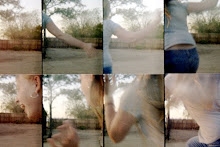Coral Castle, or Rock Gate, is a structure composed of a number of megalithic (mostly limestone formed from coral) stones, each weighing several tons. It was created by Latvian American Edward Leedskalnin north of the city of Homestead, Florida. It is currently a tourist attraction due to urban legends that claim Leedskalnin created it using magnetism or supernatural abilities. He originally built the castle in Florida City, Florida in 1923, naming it Rock Gate Park. The city borders the Everglades and at the time was a very remote location. The castle remained there until 1936 when Edward moved and spent three years moving his structures with him. He continued work on the castle until his death in 1951, spending a total of 28 years building it, never allowing anyone to see him working on it. When asked why he built it, he would vaguely answer that it was for his "sweet sixteen," going along with the lore about him being jilted by his sixteen year old fiancee in Latvia just one day before the wedding. Carved into the rocks at the front gate are signs reading "Ring Bell Twice" and "Adm. 10c Drop Below" as Leedskalnin would conduct tours for any visitors. When asked how he made the castle, he would simply say "It's not difficult if you know how." When he became ill in 1951, he put a sign on the gate reading "Going to the Hospital" after which he took a bus to a hospital in Miami. He was discovered to be suffering from advanced stomach cancer and died in the hospital three days later. At this time the castle fell to the hands of Edward's closest relative, a nephew named Henry. He sold it to Julius Levin of Chicago, Illinois who owned the property until he sold it to Coral Castle Inc. in 1981, who remain the owners today. The new owners changed the name from Rock Gate Park to Coral Castle and turned it into a tourist attraction.
The grounds of the castle consist of 1000 tons of oolitic limestone in the form of walls, carvings, furniture, and a castle tower. What is so unique and mysterious about the structures is that they're made entirely without mortar, set on top of each other using their weight to keep them together. They are so precisely and skillfully crafted that no light passes through the joints. The stones that make up the perimeter wall have a uniform height, and even with the passage of time and Florida's hurricanes, the stones have not shifted. There are a number of interesting features that make up the castle's structures, including a sundial, telescope, obelisk, barbeque, water well, fountain, celestial stars and planets, as well as an array of furniture. The revolving gate is a famous structure of the castle being that it fits within a quarter inch of the walls and is so well-balanced that a child can open it with the push of a finger.
Theories surrounding Leedskalnin's methods for creating the castle often lead towards the supernatural; Leedskalnin's own fascination with magnets and teenagers' accounts of seeing the blocks of coral apparently move "like hydrogen balloons." Yet nothing seems to suggest anything more than the fact that Edward Leedskalnin was an advanced and creative engineer who simply knew the mechanics of weight and leverage well enough to create a delightful and unusual accomplishment.
